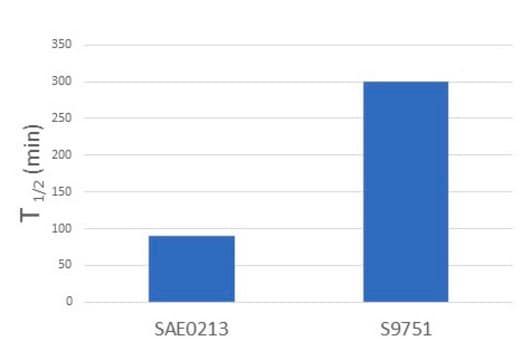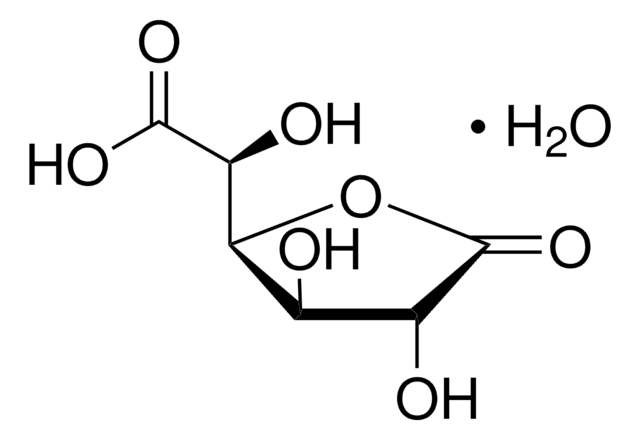S1629
Sulfatase from Aerobacter aerogenes
Type VI, buffered aqueous glycerol solution, 2-5 units/mg protein (biuret), 10-20 units/mL
Synonyme(s) :
Aryl-sulfatase, Aryl-sulfate sulfohydrolase, Phenolsulfatase
About This Item
Produits recommandés
Type
Type VI
Niveau de qualité
Forme
buffered aqueous glycerol solution
Activité spécifique
2-5 units/mg protein (biuret)
Poids mol.
~41 kDa
Concentration
10-20 units/mL
Activité étrangère
β-Glucuronidase ≤10 U/mL
Conditions d'expédition
wet ice
Température de stockage
−20°C
Vous recherchez des produits similaires ? Visite Guide de comparaison des produits
Description générale
Application
- as a deconjugation enzyme for treating plasma samples for quercetin quantification using liquid chromatography with tandem mass spectrometry (LC/MS/MS) analyses
- in fluorescence intensity-based enzymatic assay with an activity-based probe probe 1
- to treat sulfatide liposomes to remove the 3-O-sulfogalactosyde head from sulfatides
Actions biochimiques/physiologiques
Définition de l'unité
Forme physique
Substrat
Code de la classe de stockage
10 - Combustible liquids
Classe de danger pour l'eau (WGK)
WGK 2
Point d'éclair (°F)
Not applicable
Point d'éclair (°C)
Not applicable
Certificats d'analyse (COA)
Recherchez un Certificats d'analyse (COA) en saisissant le numéro de lot du produit. Les numéros de lot figurent sur l'étiquette du produit après les mots "Lot" ou "Batch".
Déjà en possession de ce produit ?
Retrouvez la documentation relative aux produits que vous avez récemment achetés dans la Bibliothèque de documents.
Les clients ont également consulté
Notre équipe de scientifiques dispose d'une expérience dans tous les secteurs de la recherche, notamment en sciences de la vie, science des matériaux, synthèse chimique, chromatographie, analyse et dans de nombreux autres domaines..
Contacter notre Service technique







